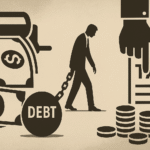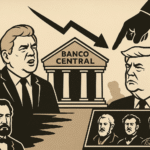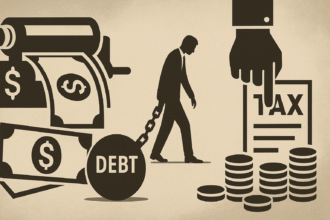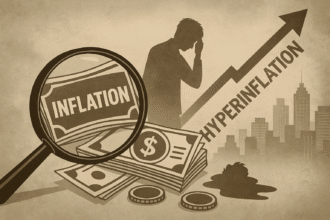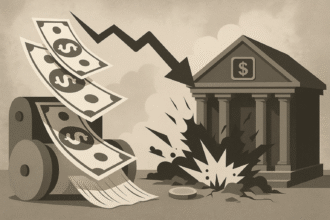Printing money has never been an economic solution. It was—and remains—a political strategy. Throughout this special series, we have dismantled the rhetoric of monetary issuance as an instrument of “development,” “social justice,” or “countercyclical stimulus.” What we have seen, based on the classical liberal tradition and the analyses of the Austrian School, is that printing money is the first step towards widespread impoverishment.
And if you've come this far, you already understand: State money is not neutral — it serves power, not the people.
Below, we have gathered the five articles from this critical and libertarian journey:
1. Printing Money: What It Really Means
We start with the basics: demystifying the very idea of “printing money.” Government doesn’t create wealth—it just redistributes purchasing power in an authoritarian way. In this post, we show how printing money unbalances the economy, distorts prices, and creates artificial cycles of euphoria and crisis.
2. Who Wins and Who Loses When the Government Prints Money
Inflation is not a diffuse evil. It has well-defined beneficiaries: the government and its close allies in the issuance. Low- and middle-income families are the first to suffer. The logic is clear — those who spend first, profit. Those who spend later, become poorer.
3. The Illusion of Wealth: Why Printing Money Doesn't Create Prosperity
In this post, we exposed the Keynesian delirium that confuses paper with production. We showed why growth based on printing money is false, unsustainable and, in the end, painful. A direct critique of the cult of consumption subsidized by paper money.
4. The Easy Money Lie: Why Printing Doesn't Create Wealth
Here, we delve deeper into the criticism: printing money is a form of silent taxation. A tax without voting, without transparency and without limits. The false generosity of the State is financed by eroding your purchasing power — and your freedom.
5. Free Currency: How to Protect Your Future from the State Printing Press
We end the series with the only possible answer: decentralization. We discuss real alternatives to state money — from cryptocurrencies to metal-backed tokens, monetary competition, and Hayek’s radical proposal: Freedom begins in the wallet.
📌 Conclusion: more than a series, a warning
The state currency is bankrupt not only in economic terms, but also in moral terms. When the government prints, it steals. When the central bank manipulates interest rates, it lies. When inflation explodes, it is always “the market’s fault.”
By understanding the mechanisms behind monetary expansion, we pave the way for a new economic ethic — one based on real scarcity, voluntary choices, and respect for property.
The series What is Printing Money? is just the beginning. The real challenge lies ahead: build a culture of resistance to monetary servitude.

